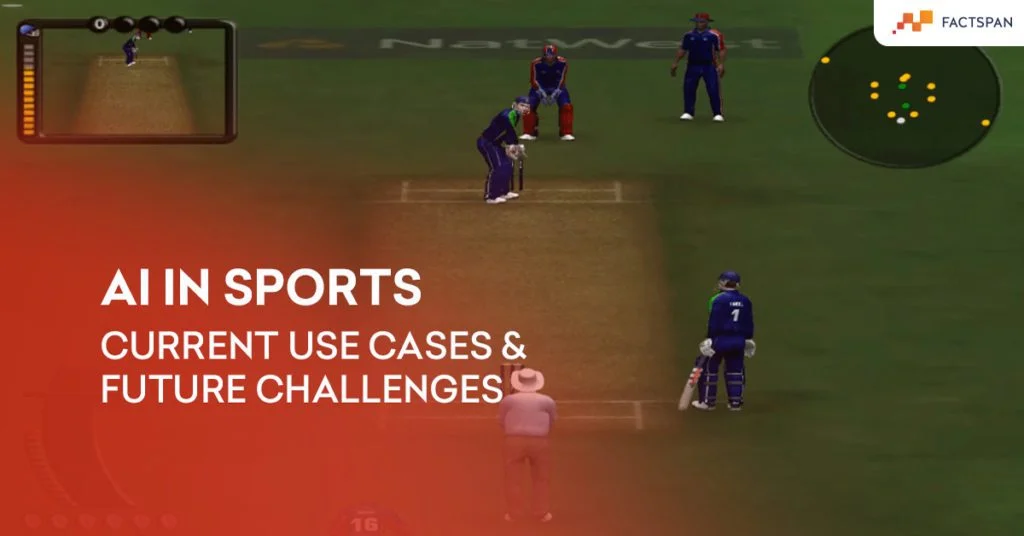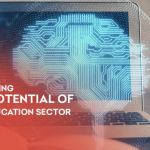Artificial Intelligence in sports was rare just five years ago. But now AI is making its way into many sports industry applications, from chatbots to computer vision and beyond. Let’s take a simple scenario: AI, when coupled with sensors, can transform how we measure players’ performance. It can measure the body functions of athletes such as biomechanics, heart rate, breathing, lung capacity, muscle movement, posture, etc. Data, when analyzed by an expert, can transform a player’s efficiency. However, not all players get a chance to get specialists to analyze their performance metrics. Therefore, AI can play a key role in coaching a lot many players in an effective and timely manner as opposed to coaches.
The global spectator sports market is expected to grow from $108.48 billion in 2020 to $132.6 billion in 2021 at a compound annual growth rate (CAGR) of 22.2% – Spectator Sports Global Market Report 2021
The sports industry has integrated AI in every nook and corner of their operations, from player recruitment, game performance analytics to ticket sales. This article tells how AI is transforming popular sport like Cricket and strategic board games like Chess, Go, and Shogi.
You can also read: AI in Big Data
AI in Cricket: Possibility of High Run Rate
Spectakome, an AI-powered cricket bat that uses an IoT-based sensor sticker. It consists of two major elements:
The Power Bat
The Microsoft team produced a lightweight sensor in the form of a sticker. It sticks in the rear portion of the bat. Above all, it gathers data through machine learning and hence, allows other players to get real-time analysis of the ongoing game. The power bat can predict the quality of shots, the speed of the ball, and the twist of the ball after hitting the bat. These predictions are transferred to the stump box via Bluetooth low energy. Finally, the data is sent to the cloud.
The Stump Box
The stump box is an edge device, which is placed underground behind the wickets. The cloud collects data from Stump Box and then the commentators can visualize the statistics of the ongoing game. Interestingly, a mobile app can showcase the same visualization.
The spectakome can help coaches gain a better understanding of Batman\’s strengths and weaknesses. Moreover, it can help coaches deliver a better strategy that could be player-specific.
AI’s Checkmate to Mind-Sports
Google’s AI subsidiary, DeepMind developed an AI software known as AlphaZero in the year 2017. The researcher’s vision was to make software effectively play a strategic board game. Hence, the software targeted games like Chess, Go (strategy board game invented in China), and Shogi (Japanese Chess). At first, the system is fed with game rules. Then, it starts playing at a beginner level. Eventually, after forty-four million games it starts to perform better than human players. Moreover, the success led AlphaGo to beat Stockfish, which was the best chess software in the world.
The only drawback of Stockfish was its approach. It learns via Darwinian selection. Firstly, the system is fed with an idea. Secondly, the two versions, one with ideas and one without, play thousands of games with each other. Lastly, the best version wins. As a result, coders couldn’t understand the algorithm and concluded it as a not-so-elegant program.

On the other hand, AlphaZero is divided into two parts. The two parts of the system work hand in hand.
A Neural Network
As an input, the neural network receives positions of pieces on the board when the game is at the last stage. As output, the network predicts which player is going to win and estimates the optimum strategy of currently available moves.
Monte Carlo Tree Search
In the gaming world, mathematicians call the Monte Carlo methods approaches that involve some randomness. The use of the M.C.T.S approach is effective because a game like chess flows like a tree of possibilities. The M.C.T.S algorithm uses the network\’s predictions to decide where to focus in the tree.
For example, if the network guesses the best possible move to be “queen takes the knight”. Then the algorithm will focus solely on the consequences of this move. Even though the best possible move fails to deliver. The M.C.T.S. algorithm takes it as feedback which decreases any erroneous predictions in the future. The popularity of AlphaZero spiked among the developers. Around the world, developers are using the AlphaZero approach to develop their own versions of open source Go engines.
The successes of Speckakome and AlphaGo showcase the wide variety of applications of AI in the sports industry. Future challenges will include how to fully utilize the data and how different departments are working with each other to enhance the player\’s efficiency. A coach, physical trainer, nutritionist, and physiologist should be working for the same goal yet if their pain points are not realized among the team, all the data is useless. Nevertheless, AI is here to stay, and as the technology improves through better sensors, processors, and algorithms, it will become a crucial aspect for the sports industry.










